Camilo Cruz Gambardella
PanSplat: 4K Panorama Synthesis with Feed-Forward Gaussian Splatting
Dec 16, 2024Abstract:With the advent of portable 360{\deg} cameras, panorama has gained significant attention in applications like virtual reality (VR), virtual tours, robotics, and autonomous driving. As a result, wide-baseline panorama view synthesis has emerged as a vital task, where high resolution, fast inference, and memory efficiency are essential. Nevertheless, existing methods are typically constrained to lower resolutions (512 $\times$ 1024) due to demanding memory and computational requirements. In this paper, we present PanSplat, a generalizable, feed-forward approach that efficiently supports resolution up to 4K (2048 $\times$ 4096). Our approach features a tailored spherical 3D Gaussian pyramid with a Fibonacci lattice arrangement, enhancing image quality while reducing information redundancy. To accommodate the demands of high resolution, we propose a pipeline that integrates a hierarchical spherical cost volume and Gaussian heads with local operations, enabling two-step deferred backpropagation for memory-efficient training on a single A100 GPU. Experiments demonstrate that PanSplat achieves state-of-the-art results with superior efficiency and image quality across both synthetic and real-world datasets. Code will be available at \url{https://github.com/chengzhag/PanSplat}.
Taming Stable Diffusion for Text to 360° Panorama Image Generation
Apr 11, 2024Abstract:Generative models, e.g., Stable Diffusion, have enabled the creation of photorealistic images from text prompts. Yet, the generation of 360-degree panorama images from text remains a challenge, particularly due to the dearth of paired text-panorama data and the domain gap between panorama and perspective images. In this paper, we introduce a novel dual-branch diffusion model named PanFusion to generate a 360-degree image from a text prompt. We leverage the stable diffusion model as one branch to provide prior knowledge in natural image generation and register it to another panorama branch for holistic image generation. We propose a unique cross-attention mechanism with projection awareness to minimize distortion during the collaborative denoising process. Our experiments validate that PanFusion surpasses existing methods and, thanks to its dual-branch structure, can integrate additional constraints like room layout for customized panorama outputs. Code is available at https://chengzhag.github.io/publication/panfusion.
Creative Discovery using QD Search
May 08, 2023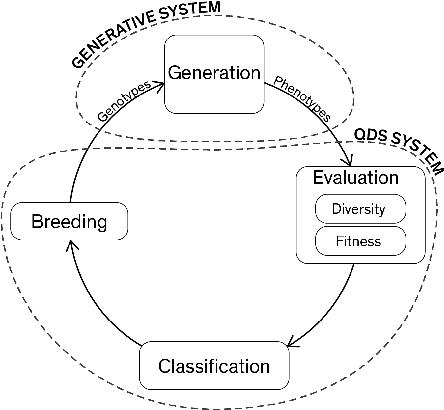

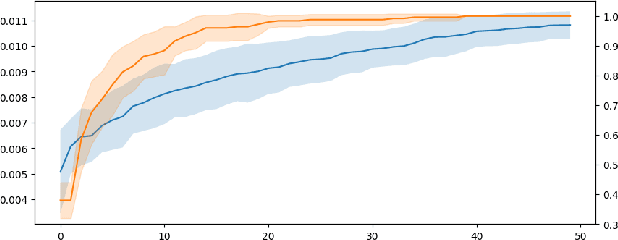
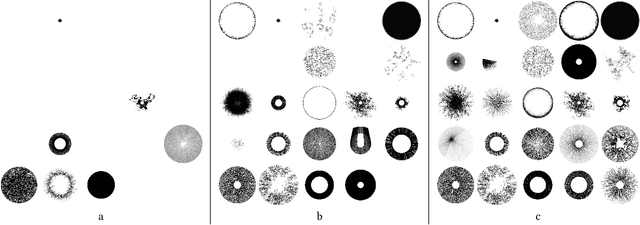
Abstract:In creative design, where aesthetics play a crucial role in determining the quality of outcomes, there are often multiple worthwhile possibilities, rather than a single ``best'' design. This challenge is compounded in the use of computational generative systems, where the sheer number of potential outcomes can be overwhelming. This paper introduces a method that combines evolutionary optimisation with AI-based image classification to perform quality-diversity search, allowing for the creative exploration of complex design spaces. The process begins by randomly sampling the genotype space, followed by mapping the generated phenotypes to a reduced representation of the solution space, as well as evaluating them based on their visual characteristics. This results in an elite group of diverse outcomes that span the solution space. The elite is then progressively updated via sampling and simple mutation. We tested our method on a generative system that produces abstract drawings. The results demonstrate that the system can effectively evolve populations of phenotypes with high aesthetic value and greater visual diversity compared to traditional optimisation-focused evolutionary approaches.
Is Writing Prompts Really Making Art?
Feb 02, 2023Abstract:In recent years Generative Machine Learning systems have advanced significantly. A current wave of generative systems use text prompts to create complex imagery, video, even 3D datasets. The creators of these systems claim a revolution in bringing creativity and art to anyone who can type a prompt. In this position paper, we question the basis for these claims, dividing our analysis into three areas: the limitations of linguistic descriptions, implications of the dataset, and lastly, matters of materiality and embodiment. We conclude with an analysis of the creative possibilities enabled by prompt-based systems, asking if they can be considered a new artistic medium.
Quality-diversity for aesthetic evolution
Feb 04, 2022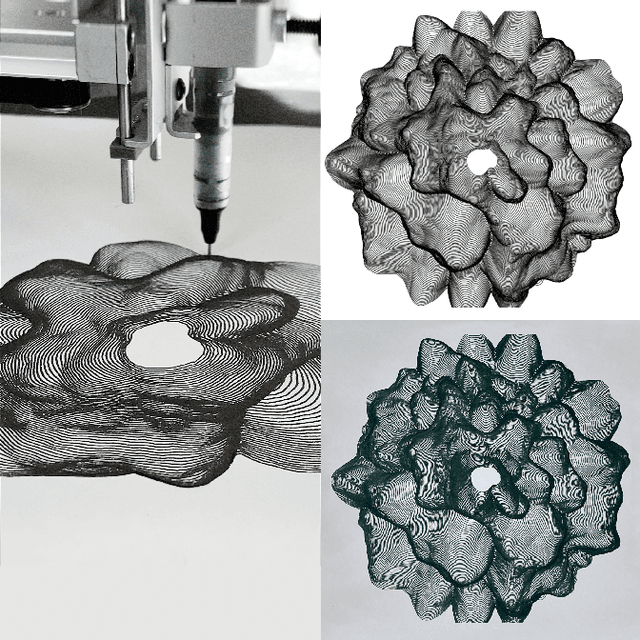
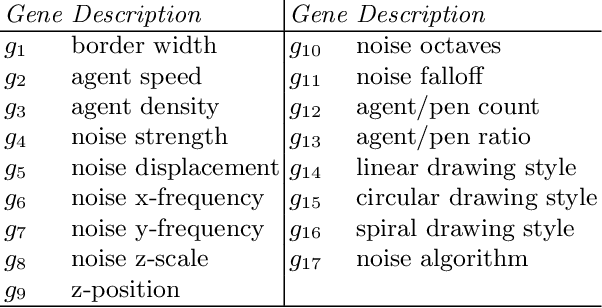

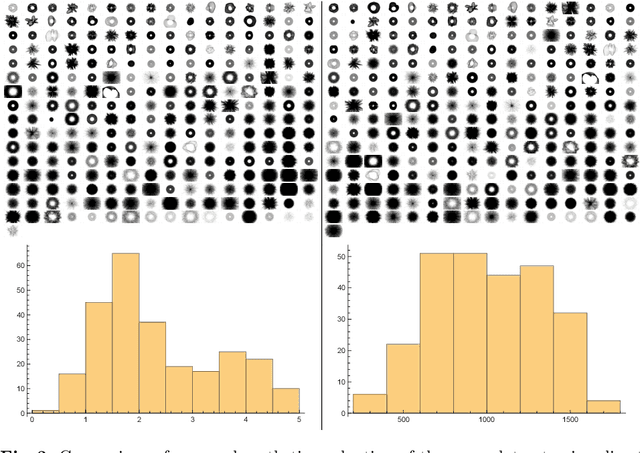
Abstract:Many creative generative design spaces contain multiple regions with individuals of high aesthetic value. Yet traditional evolutionary computing methods typically focus on optimisation, searching for the fittest individual in a population. In this paper we apply quality-diversity search methods to explore a creative generative system (an agent-based line drawing model). We perform a random sampling of genotype space and use individual artist-assigned evaluations of aesthetic quality to formulate a computable fitness measure specific to the artist and this system. To compute diversity we use a convolutional neural network to discriminate features that are dimensionally reduced into two dimensions. We show that the quality-diversity search is able to find multiple phenotypes of high aesthetic value. These phenotypes show greater diversity and quality than those the artist was able to find using manual search methods.
Complexity and Aesthetics in Generative and Evolutionary Art
Jan 05, 2022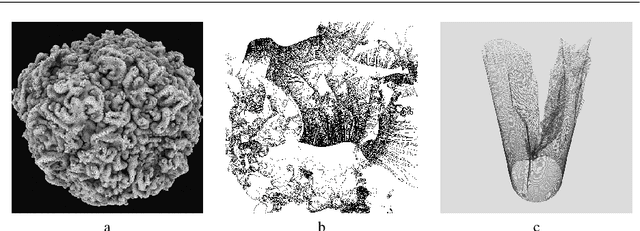
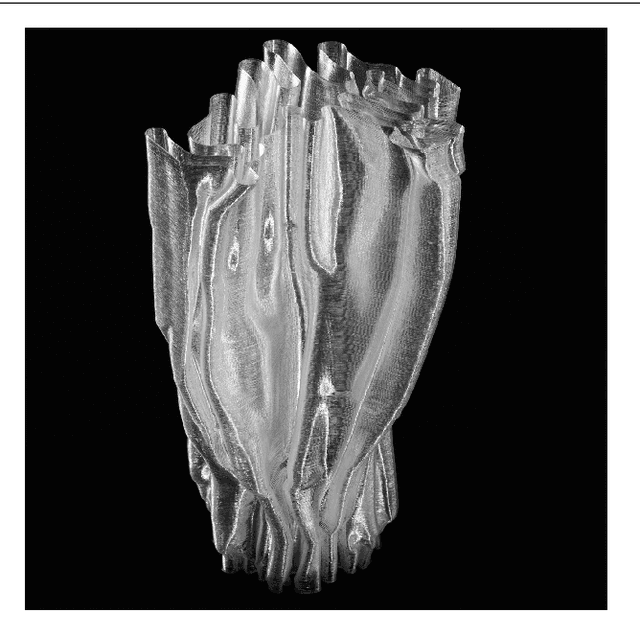

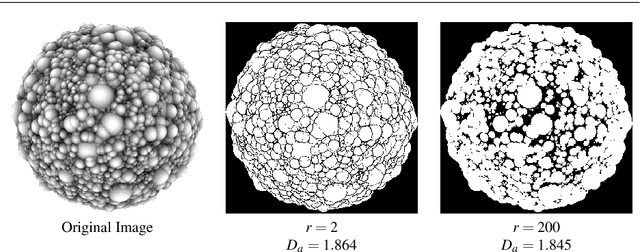
Abstract:In this paper we examine the concept of complexity as it applies to generative and evolutionary art and design. Complexity has many different, discipline specific definitions, such as complexity in physical systems (entropy), algorithmic measures of information complexity and the field of "complex systems". We apply a series of different complexity measures to three different evolutionary art datasets and look at the correlations between complexity and individual aesthetic judgement by the artist (in the case of two datasets) or the physically measured complexity of generative 3D forms. Our results show that the degree of correlation is different for each set and measure, indicating that there is no overall "better" measure. However, specific measures do perform well on individual datasets, indicating that careful choice can increase the value of using such measures. We then assess the value of complexity measures for the audience by undertaking a large-scale survey on the perception of complexity and aesthetics. We conclude by discussing the value of direct measures in generative and evolutionary art, reinforcing recent findings from neuroimaging and psychology which suggest human aesthetic judgement is informed by many extrinsic factors beyond the measurable properties of the object being judged.
Growing and Evolving 3D Prints
Jul 07, 2021



Abstract:Design - especially of physical objects - can be understood as creative acts solving practical problems. In this paper we describe a biologically-inspired developmental model as the basis of a generative form-finding system. Using local interactions between cells in a two-dimensional environment, then capturing the state of the system at every time step, complex three-dimensional (3D) forms can be generated by the system. Unlike previous systems, our method is capable of directly producing 3D printable objects, eliminating intermediate transformations and manual manipulation often necessary to ensure the 3D form is printable. We devise fitness measures for optimising 3D printability and aesthetic complexity and use a Covariance Matrix Adaptation Evolutionary Strategies algorithm (CMA-ES) to find 3D forms that are both aesthetically interesting and physically printable using fused deposition modelling printing techniques. We investigate the system's capabilities by evolving and 3D printing objects at different levels of structural consistency, and assess the quality of the fitness measures presented to explore the design space of our generative system. We find that by evolving first for aesthetic complexity, then evolving for structural consistency until the form is 'just printable', gives the best results.
Searching for Designs in-between
Feb 11, 2021



Abstract:The use of evolutionary methods in design and art is increasing in diversity and popularity. Approaches to using these methods for creative production typically focus either on optimisation or exploration. In this paper we introduce an evolutionary system for design that combines these two approaches, enabling users to explore landscapes of design alternatives using design-oriented measures of fitness, along with their own aesthetic preferences. We test our methods using a biologically-inspired generative system capable of producing 3D objects that can be exported directly as 3D printing toolpath instructions. For the search stage of our system we combine the use of the CMA-ES algorithm for optimisation and linear interpolation between generated objects for feature exploration. We investigate the system`s capabilities by evolving highly fit artefacts and then combining them with aesthetically interesting ones.
The Enigma of Complexity
Feb 03, 2021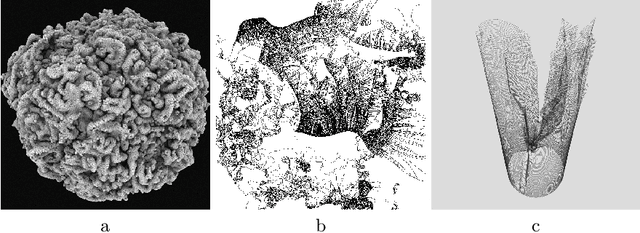
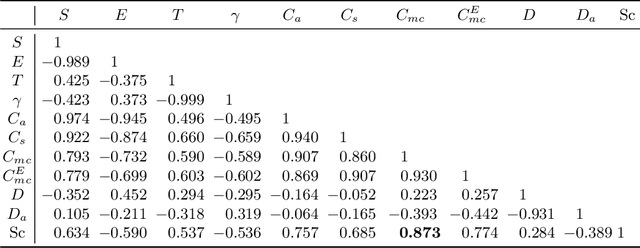
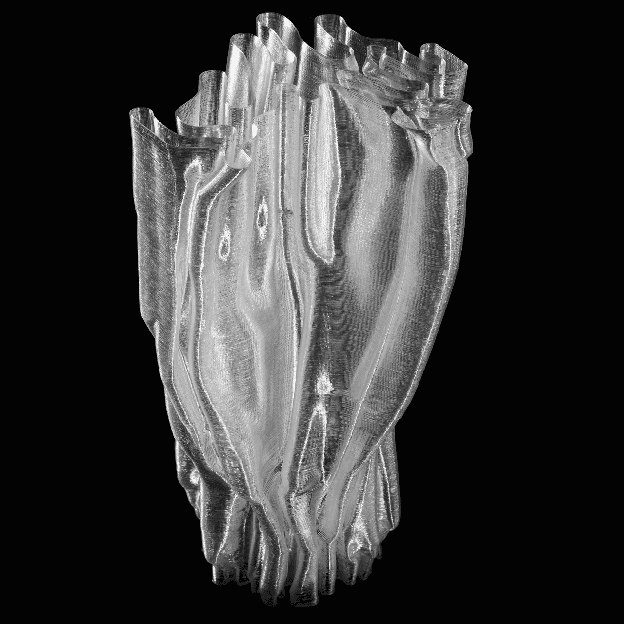
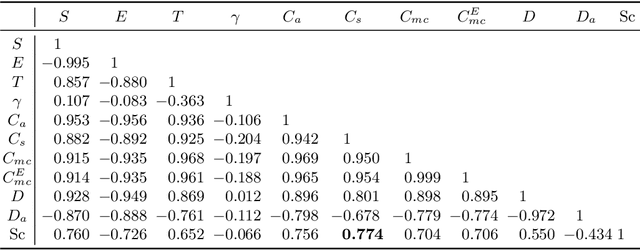
Abstract:In this paper we examine the concept of complexity as it applies to generative art and design. Complexity has many different, discipline specific definitions, such as complexity in physical systems (entropy), algorithmic measures of information complexity and the field of "complex systems". We apply a series of different complexity measures to three different generative art datasets and look at the correlations between complexity and individual aesthetic judgement by the artist (in the case of two datasets) or the physically measured complexity of 3D forms. Our results show that the degree of correlation is different for each set and measure, indicating that there is no overall "better" measure. However, specific measures do perform well on individual datasets, indicating that careful choice can increase the value of using such measures. We conclude by discussing the value of direct measures in generative and evolutionary art, reinforcing recent findings from neuroimaging and psychology which suggest human aesthetic judgement is informed by many extrinsic factors beyond the measurable properties of the object being judged.
 Add to Chrome
Add to Chrome Add to Firefox
Add to Firefox Add to Edge
Add to Edge